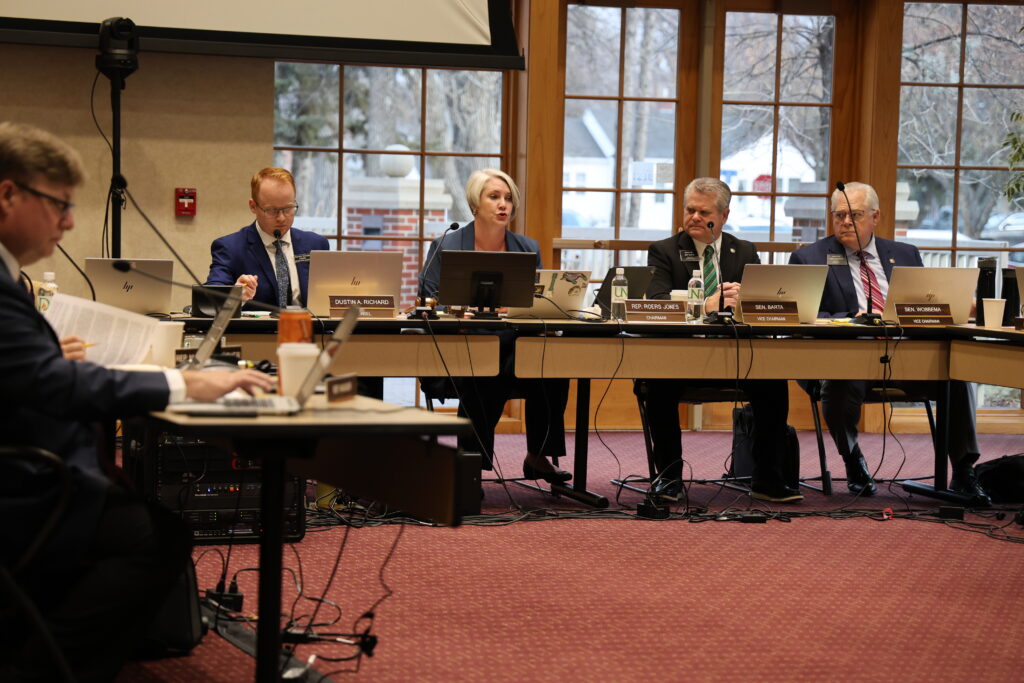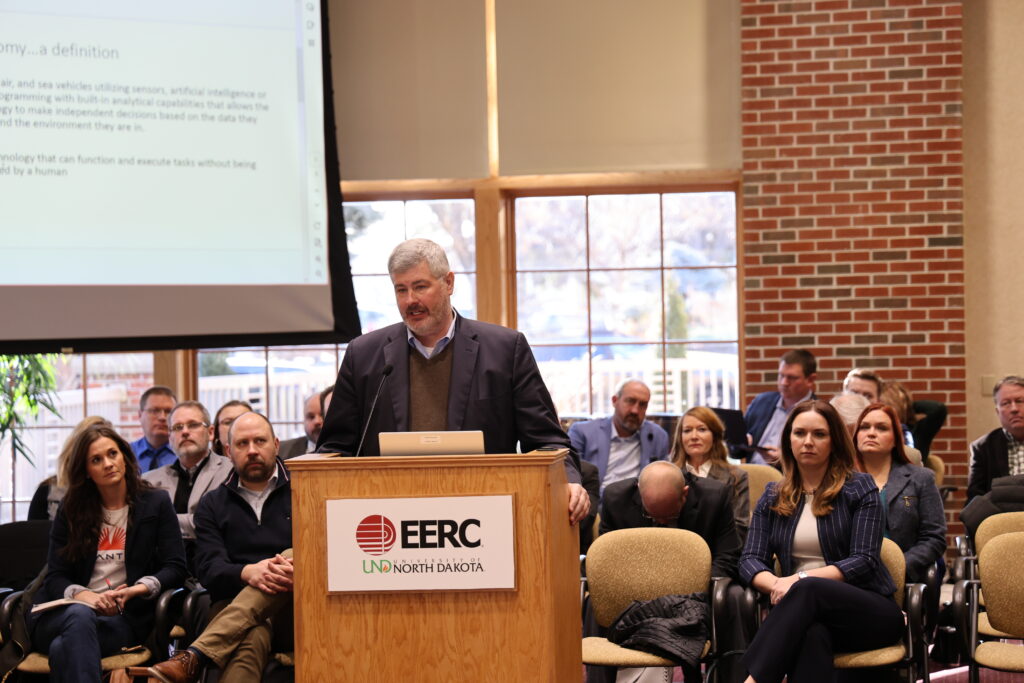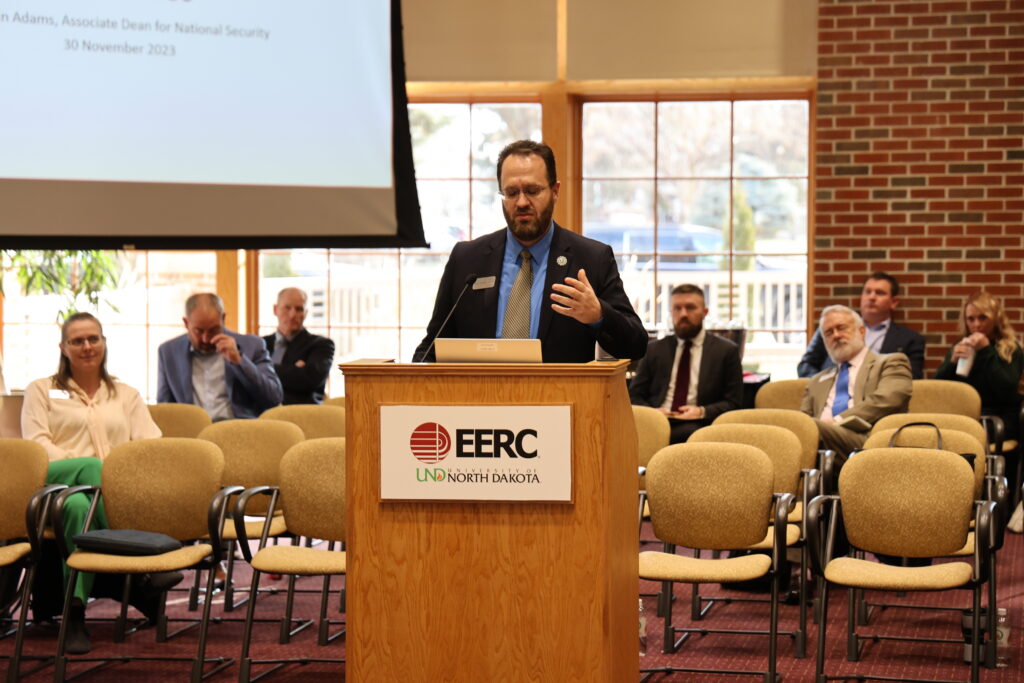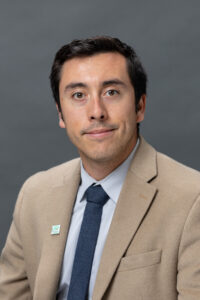State legislative committee talks autonomy and workforce at EERC
Autonomous systems may someday augment North Dakota’s labor force, industry professionals say

UND’s Energy & Environmental Research Center received a visit from North Dakota’s Interim Legislative Workforce Committee on Thursday, for a discussion on the benefits and challenges posed by autonomous systems.
The 13-member committee — composed of legislators from across the state – is tasked with studying a variety of issues pertaining to North Dakota’s workforce, including the funding of apprenticeships and training centers, as well as Thursday’s topic of integrating autonomous technology.
Charles Gorecki, CEO of the EERC, said addressing workforce challenges is essential to the future of North Dakota’s energy industry.
“I get to talk to legislators a lot about energy, but I don’t often talk to them about workforce,” he said. “Certainly, you can see within the industry that workforce is one of our biggest challenges. Autonomous systems and AI have an opportunity to help us meet those challenges.”
Cortnee Jensen, executive director of strategic partnerships at UND, said North Dakota’s low unemployment rate – the second lowest in the nation at 1.9%, according to the U.S. Bureau of Labor Statistics – and rapid economic growth pose challenges for employers seeking to fill positions.
“Right now, everyone can agree that our biggest problem in the state is workforce, and access to it,” she said. “Our unemployment rate is under 2%, which is unbelievable. In the first quarter of 2023, most of the country had an average economic growth rate of about 2%. North Dakota had 12.4% growth. The work that’s being done by our universities, industries and Legislature is incredible, but it means we have to continue the conversation. A lot of that conversation comes back to how to use autonomy.”
Mark Askelson, associate vice president for research – national security, said that autonomous systems have the capacity to augment human decision making.
“At the end of the day, almost every autonomous system is a human and machine team,” he said. “The key element here is understanding how to make the two match. It turns out that machines are really good at top-down deductive reasoning. Humans, however, can be very good at inference and dominate in this area.”
A prevailing theme of the committee’s session was the importance of North Dakota’s burgeoning unmanned aircraft systems (UAS) sector to the state’s workforce and economy.
Tom Swoyer, president and founder of Grand Sky – the UAS-focused business and aviation park next to Grand Forks Air Force Base – said the park’s tenants operate with a mix of autonomy and human input. He added that autonomy has the potential to turn “one person into three.”
Swoyer cited an example from the Air Force called “collaborative combat aircraft,” which will pair unmanned and manned fighter aircraft, to reduce the risk to the piloted aircraft during combat. The program will be tested at Grand Sky beginning in January.

As the statewide network tasked with enabling Beyond Visual Line-of-Sight flights for drone operators, Vantis is a vital component of the state’s UAS workforce. Erin Roesler, director of operations for Vantis and the Northern Plains UAS Test Site, said that although BVLOS is a major breakthrough for the industry, more can be done to increase its widespread application.
“Policy and regulation are some of the biggest barriers, but there are also more barriers such as shared infrastructure,” she said. “UAS is really the only part of the transportation sector that does not yet have shared infrastructure. What UAS needs is a different type of infrastructure. That has really been prohibiting the use and expansion of UAS in the national airspace.”
Frank Matus, director of ATC digital aviation solutions with Thales USA – a company specializing in air traffic control that has partnered with Vantis’ BVLOS mission – said it is essential for industry leaders to tout the myriad employment opportunities such technology offers.
“We’re essentially creating an entire economy around the UAS sector,” he said. “It’s not just the vehicles themselves or the infrastructure. It’s electrification, training, services and trying to work with our communities to imagine, ‘how do we keep our kids here? How do we show that there are opportunities here?’”
Ryan Adams, associate dean of national security and professor in the College of Engineering and Mines, said UAS is vital to several research initiatives on campus. Among them is the transportation technology research initiative, a partnership between UND and the North Dakota Department of Transportation (NDDOT).

The initiative uses UAS to conduct remote bridge and pavement inspections across the state, and conducts research into the feasibility of building infrastructure such as box culverts through 3-D printing.
Additionally, UND’s Research Institute for Autonomous Systems (RIAS) continues to devise the safest and most efficient methods to operate UAS. By working on projects such as collision avoidance and emergency response, the RIAS is actively mitigating risks involved with UAS flight.
“We want to be able to use these drones as effectively as we can, without causing damage or harm to the public or infrastructure,” Adams said.



